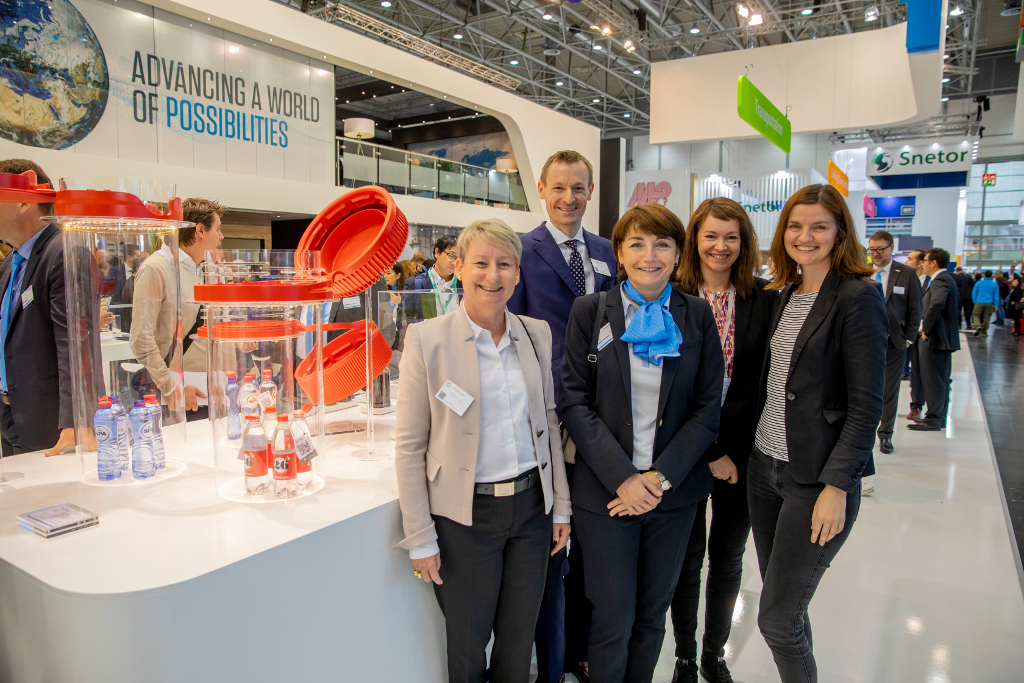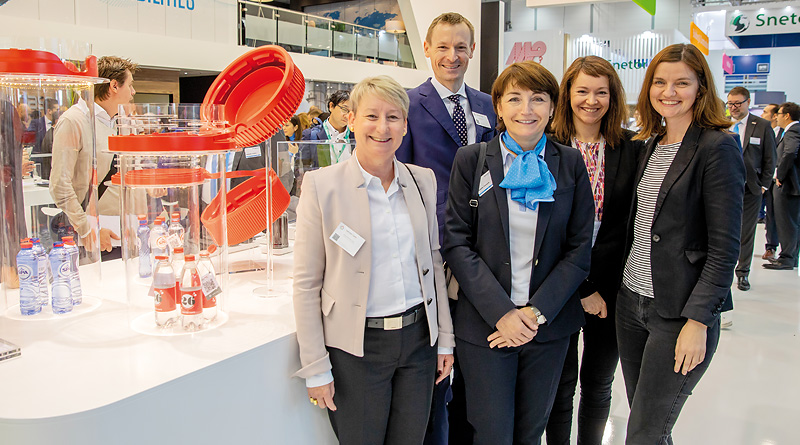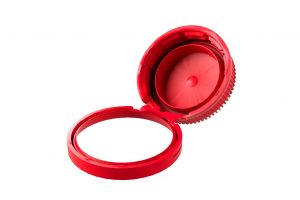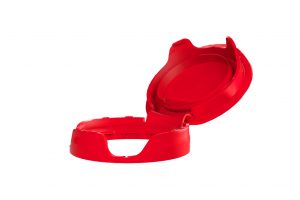Bonded to the bottle
United Caps and LyondellBasell present three varieties of tethered caps
Caps that stay attached to the bottle after it has been opened, known as tethered caps, have been presented jointly by United Caps and LyondellBasell at the K trade fair. This design requirement will be obligatory for single use beverage bottles in Europe by July 2024.
PETplanet: United Caps and LyondellBasell are presenting the results of their joint project: three varieties of tethered caps. Please could you describe your cooperation on this project?
Hoffmann-Leist: When the discussion about tethered caps began, we initially noticed great confusion in the market. So, we approached our long-term partner LyondellBasell to see if we could sit together and reflect on what would be required and discuss what was to be done. We initiated the Alliance for Closure Tethering (ACT) with LyondellBasell on our side as a resin producer. The brand owner Spadel is also part of the ACT and many more. This was in the middle of 2018. A big plus of the ACT is that it works very effectively with short discussion pathways. That’s why we are able to present three different solutions already today which we began to design early this year.
Trocherie: Each ACT partner brought their particular expertise to the project. As a resin producer, we proposed different resins which are tailored to the requirements of still and carbonated beverages.

PETplanet: What different resins have been proposed for the specific properties?
Trocherie: For the non-carbonated beverages where we don’t need resistance to stress cracking, the grade chosen is Purell GC7260G, an organoleptic resin offering flexibility in terms of processing and allowing broad processing conditions.
For the screw-with-hinge design for Carbonated Soft Drinks (CSD) and aseptically filled beverages, the selected resins are the grades Hostalen 5231H and Hostalen 5231H UV. They can be implemented for a very high level of carbonisation as they show good stress cracking resistance (ESCR) performance. Due to high throughput in processing, they also increase productivity and save energy by allowing the use of a lower injection temperature.
PETplanet: Caps and closures manufacturers offer a variety of tethered closure designs these days. Some of them require a longer neck to attach the closure. Which designs did you choose?
Reimann: We are presenting three different designs, and to anticipate, all of them can be used with standard necks.
The first design is a double-slitted TE-band design, known as a “lasso” design. This design has the advantage that it allows the use of existing moulds, thus reducing implementation complexity. There is also no increase in weight compared to classic non-tethered closures and it is available for all major neck finishes.
The second design has been developed for still water. This press-on design offers a lightweight solution.
The third design – a screw-with-hinge variant – can be used for all kind of beverages. This one is the most sophisticated because it has been developed for a multitude of closures, including the next-generation lightweight 26/22 neck.
PETplanet: So, what is the secret enabling all these tethered closure solutions to be designed for standard necks?
Reimann: The secret lies in the material. The design has to be precisely fine-tuned, there is not much safety space left. If you look for example at the active hinge design, these are much easier to realise with more material. For a fine-tuned solution, the material has to be sturdy but with good flow characteristics.
PETplanet: The lasso design is a double-slotted TE-band design. When looking at this flexible solution, one could easily imagine that the closure could annoy the consumer while drinking, which could result in it being torn off.
Hoffmann-Leist: Bringing together standards and user-friendly design with integration into the supply chain is actually a balancing act. We are therefore carrying out several consumer studies and have had the three tethered versions tested. Each alteration is difficult because consumers will open the bottle in the way they are used to opening bottles. There are also significant regional differences here. In some countries, screw-tops are preferred, and consumers are skeptical about using hinge caps; in other countries these caps are much more common. But from the feedback, we understood that user-friendliness has been certified for all three solutions.
Reimann: What’s special about the lasso cap is that we designed it in such a way that it does not dangle in the consumer’s face during drinking. Alongside safety, intuitive use and reliability, “convenience” is one of the four standards that the brand owner stipulated for the caps. But here too, the material side is enormously important because there must be a guarantee that the cap cannot simply be ripped off. The great advantage of the lasso design is that existing moulds could still be used.
PETplanet: Besides these tethered caps, you have also designed a tethered closure concept from recycled material. What is this about?
Trocherie: In the cap sector, incorporating the use of recycled material has long been difficult because of the contact with food. What we have designed for K fair is a prototype to demonstrate the feasibility of the production chain from mixed plastic waste to an end application. We used feedstock made from post-consumer plastic waste. Using our proprietary molecular recycling technology MoReTec, we converted this waste to oil to produce ethylene and then polyethylene in one of our production assets. This product has the same physical properties as conventional plastics derived from petrochemicals.
PETplanet: Thank you for the interesting discussion!




